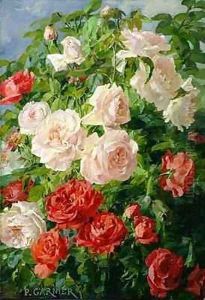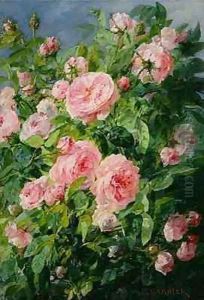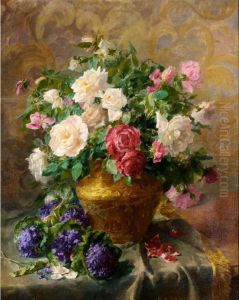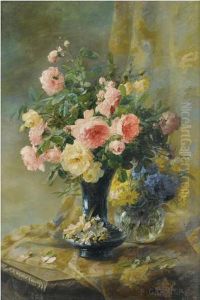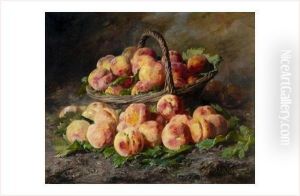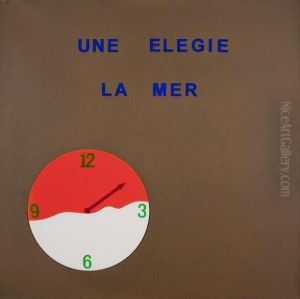Pierre Garnier Paintings
Pierre Garnier, born on August 9, 1928, in Amiens, France, was a pioneering figure in the field of visual poetry, a genre that combines textual content with visual elements to create poetic expressions. His work significantly contributed to the development of the 'Spatialism' movement within literature, which sought to transcend the conventional boundaries of the page, allowing text to occupy and interact with space in innovative ways.
Garnier's academic background was in the sciences, but his passion for literature and poetry led him to explore the intersections between language, space, and visual form. In the early 1960s, he, alongside his wife Ilse Garnier, began to develop the concept of 'Spatialist poetry'. This new form of poetry was not just about the meaning of words, but also about how those words could be visually arranged to create a spatial and aesthetic impact. The Garniers believed that poetry should reflect the modern world, including its technological advancements and new media.
Throughout his career, Pierre Garnier published numerous collections of poetry, essays, and theoretical texts that explored the possibilities of visual and spatial poetry. He collaborated with artists and poets from around the world, expanding the reach and influence of Spatialism. His works were not only published in books but also exhibited in galleries, further blurring the lines between literary and visual arts.
Garnier's impact on the art world extended beyond his contributions to poetry. He was instrumental in connecting poets and artists across different countries, particularly between France and Japan, fostering a cross-cultural exchange of ideas and artistic practices. His efforts helped to establish a global community of artists who shared an interest in exploring the spatial dimensions of language.
Pierre Garnier passed away on February 27, 2014, leaving behind a legacy that continues to influence contemporary poets and artists. His visionary approach to poetry opened up new possibilities for the use of language in art, challenging and expanding the boundaries of written expression. Garnier's work remains a significant reference point for those interested in the intersections of text, space, and visual art.

